Delta solutions, estuary studies, stream restoration, CV floodplain restoration, floodplain reconnection, meadows, cattle exclusion, habitat improvements.
Aquatic Ecosystem Conservation and Restoration
Research Programs
| Project | ||
|---|---|---|

|
Sierra Nevada Meadows Clearinghouse | Mountain meadow wetlands provide disproportionally important ecological services as compared to the area they cover in the Sierra Nevada by providing wetland-associated biodiversity, attenuating floods, and by contributing to downstream water quality and flow. However, degradation and loss of hydrologic function are widespread in Sierran meadows due to past and continuing anthropogenic effects including grazing management, diversions, roads and culverts, as well as non-native species. |
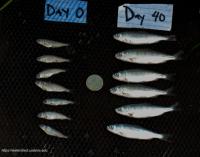
|
Nigiri Project: Growing rice and salmon on a floodway | The Center for Watershed Sciences is investigating harvested rice fields as potential salmon nurseries that could help boost struggling Central Valley populations. Experimental releases of young hatchery salmon on the Yolo Bypass near Sacramento indicate that parts of the 57,000-acre floodway could make productive rearing habitat at relatively little cost to farmers. |

|
Arc of Native Fishes | The Arc project is designed to study how land forms in the Sacramento-San Joaquin Delta interact with freshwater inputs and tides to create habitat favored by native fishes. The investigation focuses on regions in the North Delta where fish surveys have shown relatively high populations of native fishes - regions including Suisun Marsh, the flooded Sherman Island and the Cache and Lindsey sloughs. The areas together form an arc, inspiring the project name "North Delta Arc of Native Fishes." |

|
Beavers, Meadows and Climate Change | Mountain meadows inhabited by beavers have an important role in mitigating climate change. As carbon sinks, they store remarkably large amounts of greenhouse gases for the long term. However, degradation from livestock grazing and conversion to dry grasslands has greatly diminished the carbon-storing capacity and biodiversity of meadows in the Cascade Range and Sierra Nevada of California. Restoration of these biodiversity hotspots is key for creating climate refugia for sensitive species and increasing carbon sequestration. |

|
Big Springs Creek | In 2008, Center researchers seized a rare opportunity to quantify the results of conservation action on a large scale. The Nature Conservancy bought ranchland along Big Springs Creek, a Shasta River tributary that had been degraded by cattle grazing. The conservancy continued ranching but fenced out cattle along the 2.2 mile stream. |
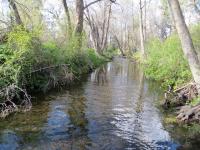
|
Little Shasta River | The Little Shasta River project is the third phase of CWS’ research in the Shasta basin – moving past baseline assessment and demonstration projects to private landowner collaboration. The Center for Watershed Sciences is partnering with private landowners, California Trout, and The Nature Conservancy to identify how heritage rangeland can be managed to ensure the long-term viability of both rangeland and recover coho salmon populations. Our research shows how science can inform and influence the management of rangeland and environmental resources. |

|
Scott River | The Scott River includes California's largest wild population of coho salmon (Onchorhynchus kisutch); a species listed as threatened under both state and federal Endangered Species Acts. The Center for Watershed Sciences is partnered with California Trout and Western Rivers Conservancy to improve conservation strategies within the Scott River and its coldwater tributaries while maintaining agricultural land-use activities for private property-owners in the region. Monitoring throughout this watershed is focused on determining whether current conditions meet desirable streamflow and water temperature criteria for the success of the species and whether ongoing conservation activities have any positive effect on these conditions. |

|
Evaluation of Bear Creek Meadow Restoration Project | This project evaluated the restoration of Bear Creek, immediately upstream of the Fall River, in Modoc County, California. Approximately two miles of degraded meadow creek was restored five years ago by a private landowner. |

|
Quantifying relative risk of collapse for Delta fish populations | This project develops and applies statistical tools to long-term monitoring data in the Sacramento-San Joaquin Delta to identify fish populations at risk of collapse and highlight management actions that could prevent irreversible declines. |
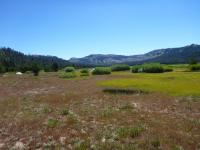
|
Van Norden Meadow Restoration | This project restores Van Norden Meadow in the Sierra Nevada to improve hydrology, ecological function, and habitat resilience by reestablishing natural stream processes, removing invasive species, and implementing large-scale revegetation and Beaver Dam Analogues, with ongoing monitoring to support threatened and endangered species. |

|
Reconnecting Winter run to their ancestral waters: monitoring reintroduction success on the McCloud River | This project supports the reintroduction of endangered winter-run Chinook salmon to the McCloud River by implementing a comprehensive monitoring program that tracks productivity, survival, health, migration, and ecological conditions to inform management decisions and evaluate reintroduction success in collaboration with tribal, state, and federal partners. |

|
Origin and Abundance of Chinook Salmon in Putah Creek | This project monitors Chinook salmon abundance, reproduction, and migration in Putah Creek through carcass surveys, juvenile trapping, acoustic tagging, and ecological studies, supporting science-based conservation and serving as a training ground for future fisheries and watershed professionals. |

|
Refining a practice standard for conservation of salmon that volitionally access winter-flooded rice fields | - |
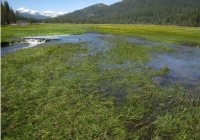
|
Headwaters restoration for drought resiliency | This project assesses how Beaver Dam Analogues and Post-Assisted Log structures enhance drought resilience for native coldwater fish by monitoring habitat, hydrology, and biological responses. |
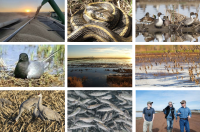
|
A Conservation Footprint for California Rice | This project evaluates the rice acreage, management practices, and locations needed to sustain multiple wildlife species in California’s Central Valley, integrating ecological, economic, and agronomic considerations to define a conservation footprint for ricelands. |

|
Suisun Marsh Fish Study | This project monitors fish and invertebrate populations in Suisun Marsh to track trends in sensitive and native species, guide water management decisions, and provide a long-term baseline for research on wetland health and restoration. |

|
North Delta Arc of Native Fishes | This project examines how the Delta’s landscape, water flows, and ecological conditions shape habitats and support native fish, using field data to model ecosystem function and guide tidal marsh restoration. |

|
Montezuma Wetlands Fish & Habitat Restoration Study | This project explores how raising subsided land with dredge spoils to create tidal wetlands in Suisun Marsh affects fish and the aquatic food web. |

|
Dutch Slough Habitat Restoration Study | This project studies how fish have colonized newly created tidal wetlands at Dutch Slough while also examining carbon flux and bird usage in the restored habitat. |

|
Socio-ecological Potential for Co-management of Tidal Wetlands for Fish and Fowl | This project explores how alternative wetland management strategies in Suisun Marsh can support juvenile Chinook salmon, waterfowl, and local communities by enhancing food webs, water quality, and ecological benefits. |
